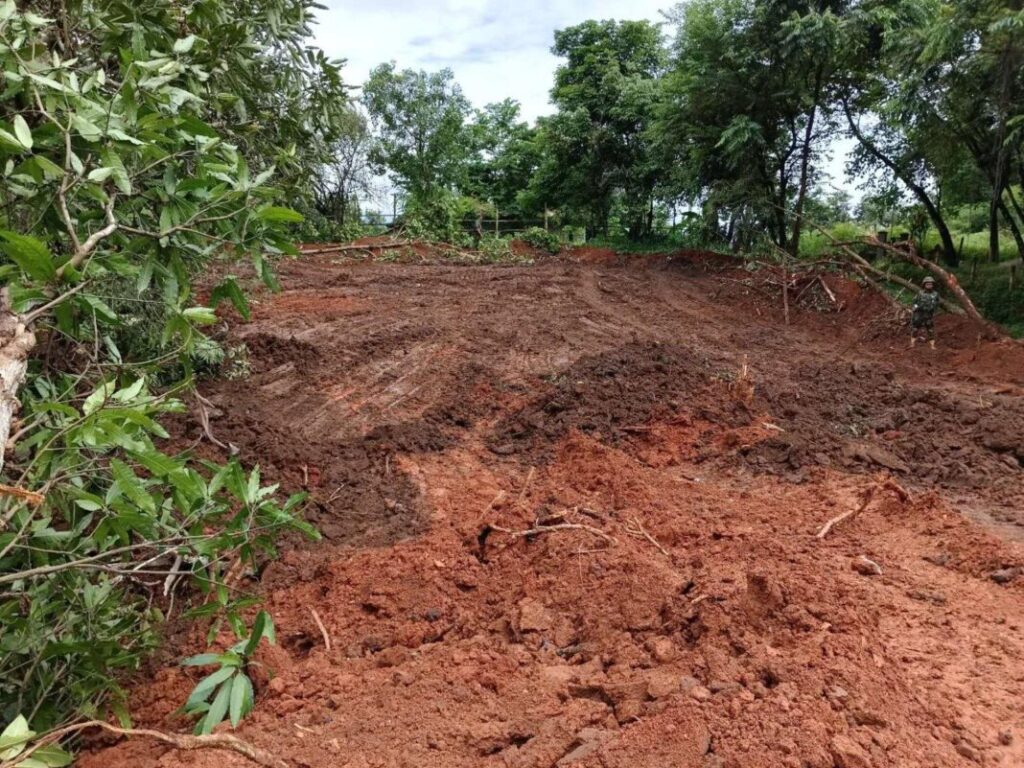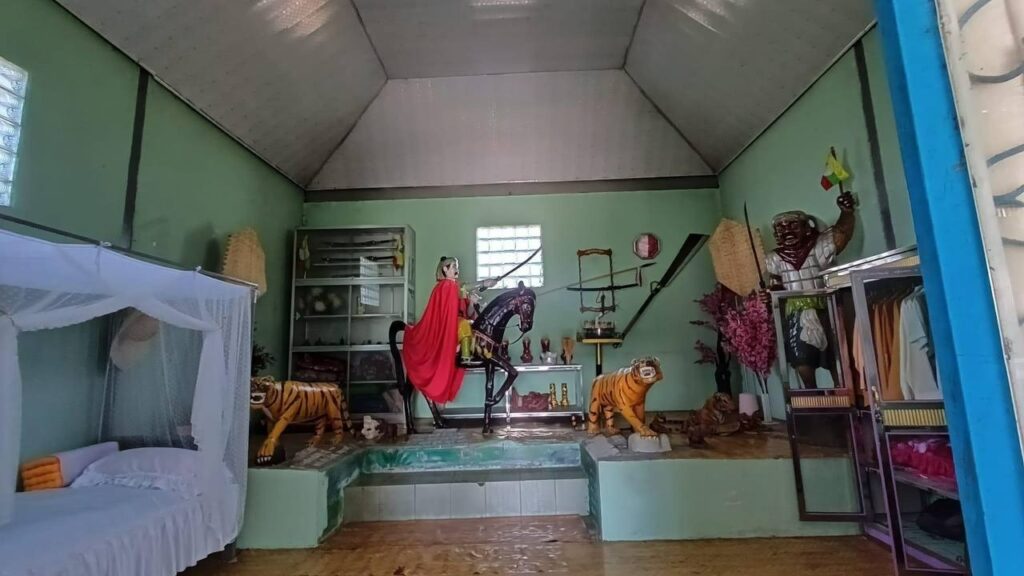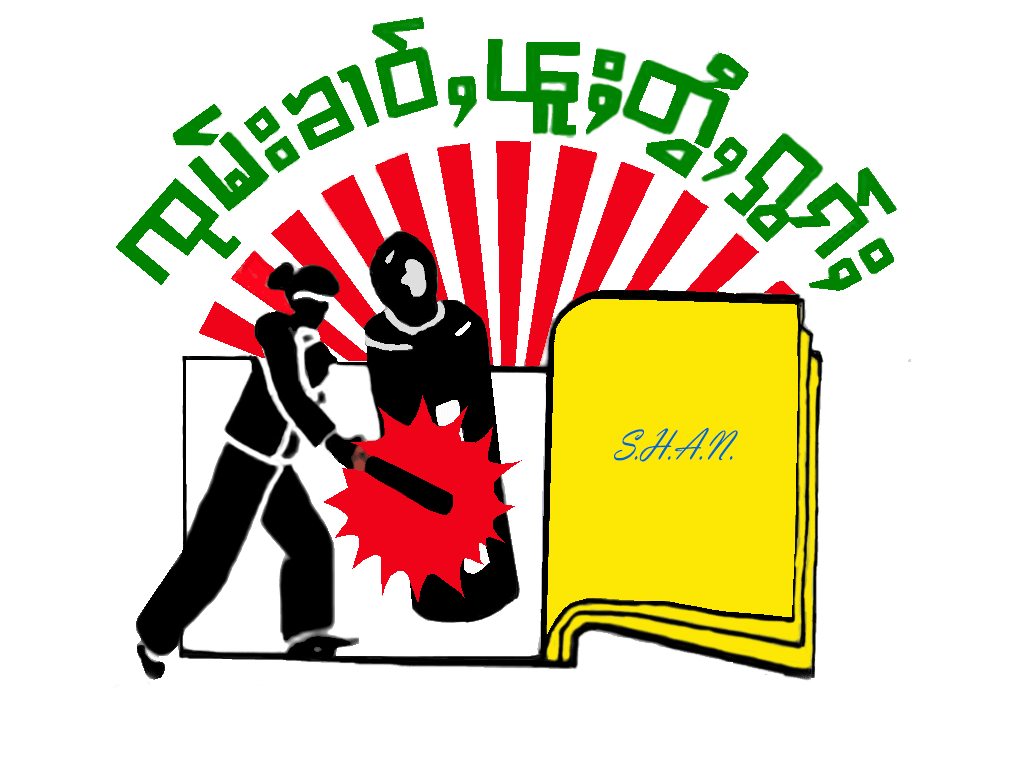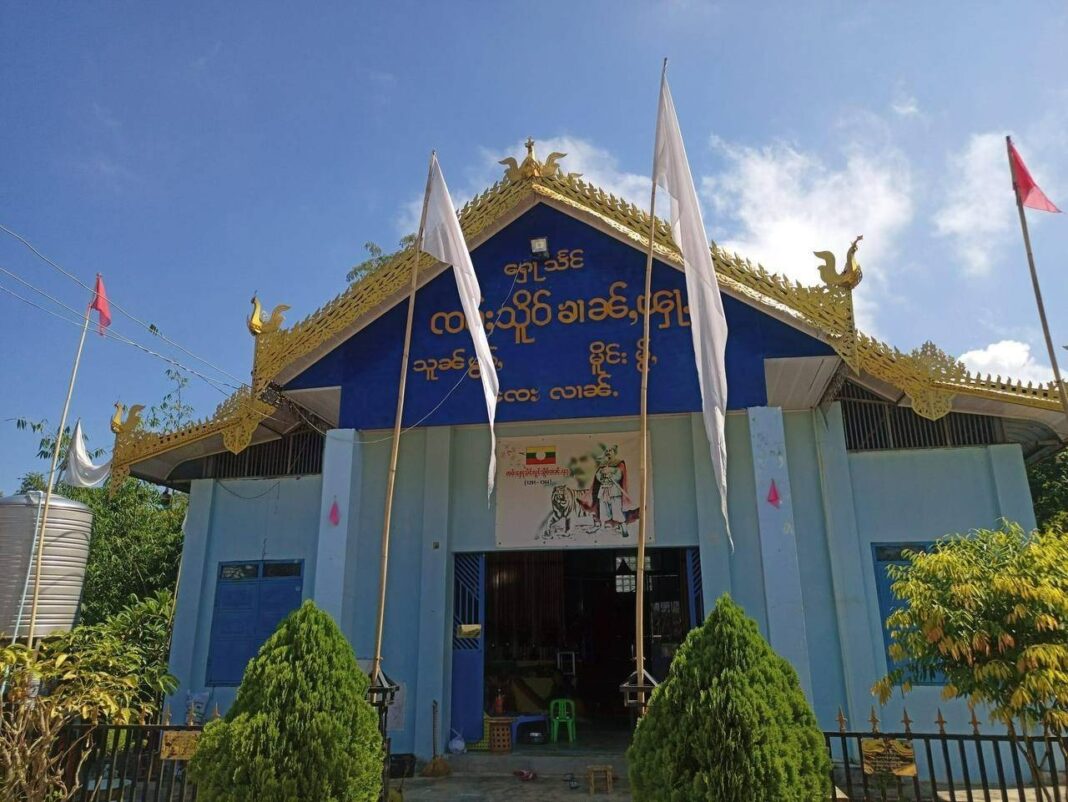In early August, around 4:00 p.m. a group of individuals dressed in green military attire was seen operating a bulldozer to excavate the ground.
This demolition operation was specifically aimed at the city wall of Jae Lant village, which holds historical significance as the site where Shan’s historical Emperor Sao Hsur Khan Pha once held his throne. Jae Lant village is situated along the Muse – Nam Kham Road in the Muse District of Shan State.
Local residents are expressing concerns about the recent actions of the Ta’ang National Liberation Army (TNLA), which involved in bulldozing the city wall that holds historical significance as the site where Shan’s prominent Emperor Sao Hsur Khan Pha once had his throne and palace. This activity has raised concerns within the community that it could potentially spark an ethnic tension. The coexistence of Taang and Shan communities for many years has been marked by peaceful relations, and the TNLA’s actions, especially without prior notification to the local communities, are viewed as provocative and unsettling.

Sao Hsur Khan Pha played a pivotal role in consolidating, unifying, and establishing the Third Shan’s nation in 1331. Jae Lant village, the place where he founded and resided, continues to exist to this day as a testament to his historical significance.
While the palace failed to withstand the test of time, falling victim to natural disasters like landslides and the ravages of wars, the city wall, a historical treasure , has endured through the centuries.
This city wall was built during the Third Shan Nation’s founding and acted as a powerful barrier to keep enemies and invaders from entering the palace, making it a historical treasure.
The recent actions of the TNLA forces, involving the bulldozing and infilling of soil at the site of the city wall, have raised concerns. Notably, these actions occurred without prior notification. This site holds significance not only as a heritage site linked to Jae Lant’s princely descendants and Jae Lant’s residents but also as a vital part of the historical heritage of the Shan people.
An SSPP’s local officer informed the Shan Herald Agency for News that as soon as they were made aware of the TNLA troops’ activity at the heritage site, on the same day, SSPP local authorities went to the area around 7:00 PM and requested the cessation of the activity.
The SSPP officer elaborated, saying, “Upon receiving the information, one of our officers went to inspect. The area where they are filling the soil, in fact, used to be our former military base. However, we no longer maintain a presence there. Regardless of the reason, considering it’s a heritage site, any actions to alter the site would not be appropriate.”
Around 10:00 am on August 8th, SSPP local authorities, along with administrative officials and nearly 30 elders and local residents, conducted an inspection of the city wall area where TNLA troops had been altering the soil.
The TNLA’s actions in demolishing the heritage site, the city walls, could be seen as an attempt to intentionally destroy this historical treasure. The SSPP/SSA, as stated on August 13th, firmly rejects and condemns any act or intention to harm heritage, whether carried out by individuals or organizations.
Furthermore, the SSPP/SSA emphasized that relevant responsible individuals or organizations must take appropriate actions and provide explanations for their actions until the residents are satisfied. This stance is articulated in the SSPP/SSA statement.
The TNLA members’ actions of altering the soil at the site of the ancient wall, a place highly cherished by local residents, have raised concerns within the Shan community.
In response to the activity, a young Shan resident from the Htung Mao region conveyed to the Shan Herald that the city walls were originally constructed as a defense against enemies in the past and hold significant value for the residents of Jae Lant.
“According to historical records, this city wall was originally constructed as a defensive measure against potential enemies, making it a place of great significance for the residents of Jae Lant. The region has also been a harmonious coexistence of Shan and Taáng local communities for years. Therefore, we are concerned that this single act could potentially lead to ethnic tensions between the Taáng and Shan communities,” expressed the young man from the Htung Mao region to the Shan Herald Agency for News.
It is further emphasized that the absence of any response from the relevant authorities to the demands and questions surrounding this issue could be interpreted as disrespectful to another ethnic group, a sentiment echoed by a 30-year-old resident.
“We simply can’t understand why TNLA would engage in such actions. It raises questions about whether their intention might be to incite conflict among ethnic groups,” expressed the concerned youth.
Historical records emphasize the city walls’ importance in terms of military strategy and security, as they were designed with three layers to deter potential threats and intrusions from enemies during the time of Sao Hsur Khan Pha.
Local residents are also voicing their expectations that the Ta’ang National Liberation Army (TNLA) forces, while operating in the vicinity of Jae Lant heritage sites, should hold a mutual respect for such significant historical landmarks.

“These actions can be seen as damaging our ancient heritage, and we urge the relevant organizations to take appropriate steps. While we may not be able to undo what’s already been done, it’s crucial that we cooperate to prevent any further harm to the city wall,” the young man from the Htung Mao area emphasized. “The Ta’ang and Shan communities have peacefully coexisted in this region for over 30 years, so it’s essential for the TNLA to respect the concerns of the people.”
Residents have noted that the section of the city wall currently being demolished by TNLA forces spans approximately 100 feet in width, and the entire city wall’s estimated length may be nearly 4 miles.
As of now, PSLF/TNLA has not responded to either the public statements or the condemnation issued by SSPP/SSA regarding the city wall’s demolition.
In response to inquiries made to the information department of PSLF/TNLA, they conveyed, “The matter has been reported to our superiors or higher authorities, and we are awaiting their response. Until then, we cannot provide any further information,” as stated to the Shan Herald Agency for News.
The deliberate destruction of historical heritage, cultural artifacts, literature, and religious structures is in direct contradiction to the principles outlined in Article 30 of the United Nations Declaration on the Rights of Indigenous Peoples (UNDRIP), as highlighted in a statement released by Shan social organizations on August 16.
Furthermore, the safeguarding of ancient historical sites and religious buildings is a fundamental aspect of International Humanitarian Law (IHL), even during times of military engagement.
Over 40 social organizations have jointly released a statement, urging TNLA leadership to swiftly take appropriate actions against those responsible for the demolition of the historic ancient city walls in Jae Lant, carried out in full view of the local population.
Notably, in 2019, local regulations enforced by the people of Jae Lant in Muse Township prohibited the construction of houses within a 30-foot radius surrounding the city wall, emphasizing the need to protect this heritage.
In light of this incident, the shared sentiment is that the historical heritage, which serves as a reminder of the reign of the Shan emperor that once extended into parts of China, should not be subjected to destruction but rather should be preserved through collaborative efforts.




